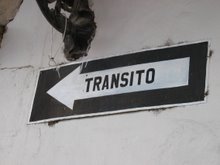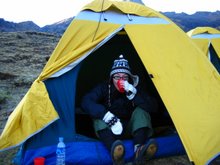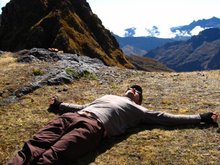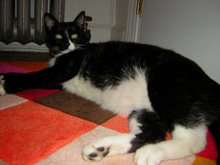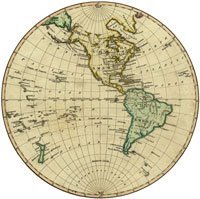 We make it to Cusco, the capital of the 2nd Incan Dynasty, just in time for Inti Raymi. However, we can barely walk thanks to our 22 hour bus ride. We sleep through the evening festivities (that begin at 1am) and decide to venture out the next day for the afternoon cermonies.
We make it to Cusco, the capital of the 2nd Incan Dynasty, just in time for Inti Raymi. However, we can barely walk thanks to our 22 hour bus ride. We sleep through the evening festivities (that begin at 1am) and decide to venture out the next day for the afternoon cermonies.  Ever since the Spanish conquest in the 16th century (when Incan temples were striped of their stones and turned into cathedrals), Cusco had lost its stature as the cultural center of Peru. Pizarro opted instead for the rather unpleasant climate of Lima, although probably good for trade with Europe. Yet since the big boom of tourism in Peru, there has been a reassurgence of Andean pride and a great historical interest in this region called the "Sacred Valley."
Ever since the Spanish conquest in the 16th century (when Incan temples were striped of their stones and turned into cathedrals), Cusco had lost its stature as the cultural center of Peru. Pizarro opted instead for the rather unpleasant climate of Lima, although probably good for trade with Europe. Yet since the big boom of tourism in Peru, there has been a reassurgence of Andean pride and a great historical interest in this region called the "Sacred Valley."
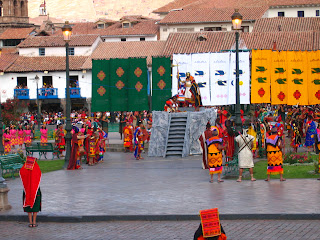 And so we have Inti Raymi. Not only a celebration of winter soltice, the festival celebrates Cusco´s Incan history by reenacting several traditional ceremonies in full Incan regalia. The afternoon begins with a ceremony at the Plaza de Armas and then procedes to the ruins at nearby Sacsayhuamán.
And so we have Inti Raymi. Not only a celebration of winter soltice, the festival celebrates Cusco´s Incan history by reenacting several traditional ceremonies in full Incan regalia. The afternoon begins with a ceremony at the Plaza de Armas and then procedes to the ruins at nearby Sacsayhuamán.
 Because we effectively arrive on the day of Inti Raymi, all the shops are closed, and we are unable to buy tickets for Sacsayhuamán. We get to take in most of the cermony at the plaza, the part we were able to see past the hordes of tourists that is. Apparently, we weren´t the only gringos with the idea to come to Cusco for Inti Raymi.
Because we effectively arrive on the day of Inti Raymi, all the shops are closed, and we are unable to buy tickets for Sacsayhuamán. We get to take in most of the cermony at the plaza, the part we were able to see past the hordes of tourists that is. Apparently, we weren´t the only gringos with the idea to come to Cusco for Inti Raymi.  The Incans were particularily successful in that they allowed cultures to remain culturally indigenious as long as they served the Incan empire accordingly. Thus, we have the Cusco flag of many colors, each representing a different Andean region united under Incan rule. Although it is a celebration of diversity of sort, it´s not to be confused with the gay and lesbian flag.
The Incans were particularily successful in that they allowed cultures to remain culturally indigenious as long as they served the Incan empire accordingly. Thus, we have the Cusco flag of many colors, each representing a different Andean region united under Incan rule. Although it is a celebration of diversity of sort, it´s not to be confused with the gay and lesbian flag.
 Some smartly dressed Andean ladies.
Some smartly dressed Andean ladies.
 Luckily, we are able to see some traditional Inti Raymi dancing at the square. The dancing is hard to describe other than it´s kind of like really acrobatic break-dancing with scissors.
Luckily, we are able to see some traditional Inti Raymi dancing at the square. The dancing is hard to describe other than it´s kind of like really acrobatic break-dancing with scissors.
 One of this kid´s moves was to bite his shoe. Some very unpleasant policemen eventually chased him away.
One of this kid´s moves was to bite his shoe. Some very unpleasant policemen eventually chased him away.
 Jen finds a really nice man who makes bags by hand.
Jen finds a really nice man who makes bags by hand.
 Another street protest. This one is against Alan García, the current president. Not too many people are too happy with him as he was already proven to be extremely corrupt during his first term. Yet somehow he got elected again. Sound familiar?
Another street protest. This one is against Alan García, the current president. Not too many people are too happy with him as he was already proven to be extremely corrupt during his first term. Yet somehow he got elected again. Sound familiar?













 And so we have Inti Raymi. Not only a celebration of winter soltice, the festival celebrates Cusco´s Incan history by reenacting several traditional ceremonies in full Incan regalia. The afternoon begins with a ceremony at the Plaza de Armas and then procedes to the ruins at nearby Sacsayhuamán.
And so we have Inti Raymi. Not only a celebration of winter soltice, the festival celebrates Cusco´s Incan history by reenacting several traditional ceremonies in full Incan regalia. The afternoon begins with a ceremony at the Plaza de Armas and then procedes to the ruins at nearby Sacsayhuamán. The Incans were particularily successful in that they allowed cultures to remain culturally indigenious as long as they served the Incan empire accordingly. Thus, we have the Cusco flag of many colors, each representing a different Andean region united under Incan rule. Although it is a celebration of diversity of sort, it´s not to be confused with the gay and lesbian flag.
The Incans were particularily successful in that they allowed cultures to remain culturally indigenious as long as they served the Incan empire accordingly. Thus, we have the Cusco flag of many colors, each representing a different Andean region united under Incan rule. Although it is a celebration of diversity of sort, it´s not to be confused with the gay and lesbian flag. Some smartly dressed Andean ladies.
Some smartly dressed Andean ladies. Luckily, we are able to see some traditional Inti Raymi dancing at the square. The dancing is hard to describe other than it´s kind of like really acrobatic break-dancing with scissors.
Luckily, we are able to see some traditional Inti Raymi dancing at the square. The dancing is hard to describe other than it´s kind of like really acrobatic break-dancing with scissors. One of this kid´s moves was to bite his shoe. Some very unpleasant policemen eventually chased him away.
One of this kid´s moves was to bite his shoe. Some very unpleasant policemen eventually chased him away. Jen finds a really nice man who makes bags by hand.
Jen finds a really nice man who makes bags by hand. Another street protest. This one is against Alan García, the current president. Not too many people are too happy with him as he was already proven to be extremely corrupt during his first term. Yet somehow he got elected again. Sound familiar?
Another street protest. This one is against Alan García, the current president. Not too many people are too happy with him as he was already proven to be extremely corrupt during his first term. Yet somehow he got elected again. Sound familiar?